Greenhouse gas (GHG) emissions & air quality
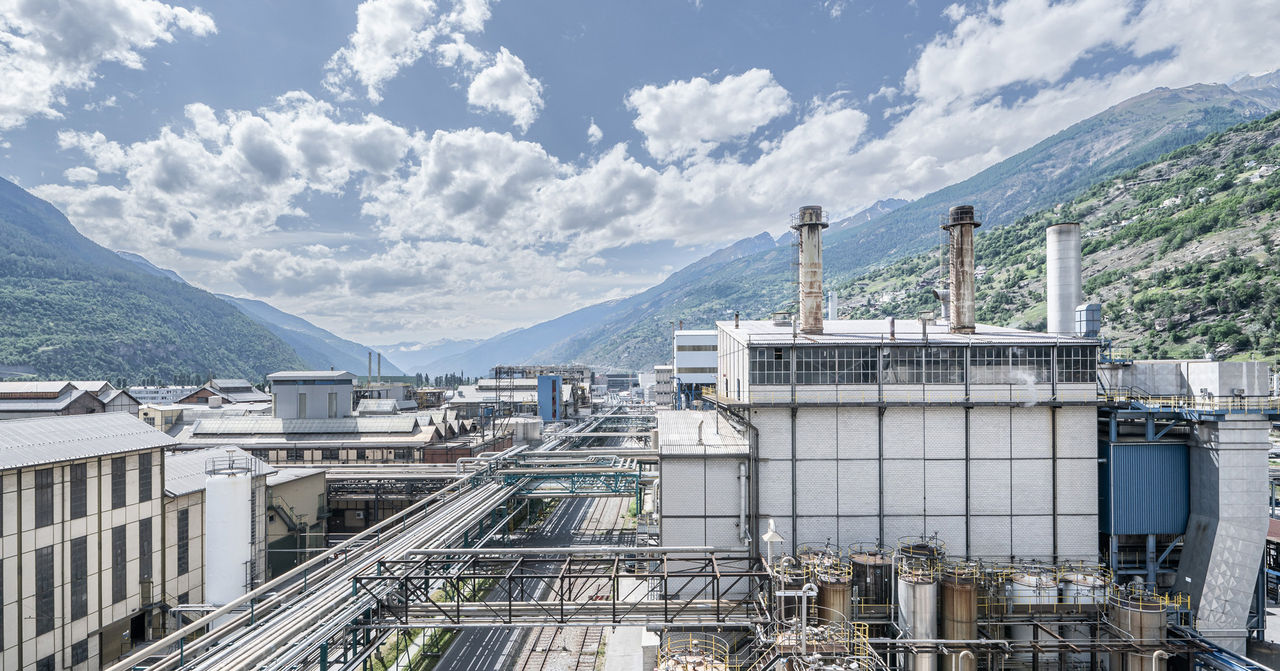
Reducing GHG emissions and other air pollutants is a key priority for Arxada in our effort to preserve our planet and limit climate change. While our products can have a positive impact, we look to decarbonize our facilities and across our supply chain. This aligns with our ambition to be a low-carbon chemicals company with a Net Zero carbon footprint.
In 2023, SBTi approved our emission reduction targets in line with a 1.5°C emissions reduction trajectory. This recognition solidifies Arxada's steadfast commitment to sustainability and its contribution to our industry's transition to cleaner, greener solutions. Our targets are:
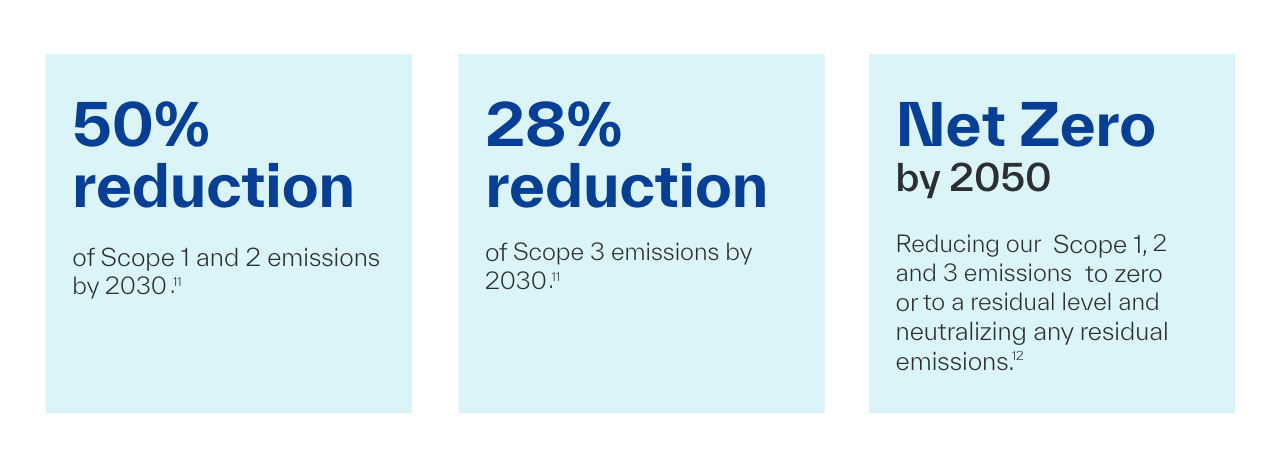
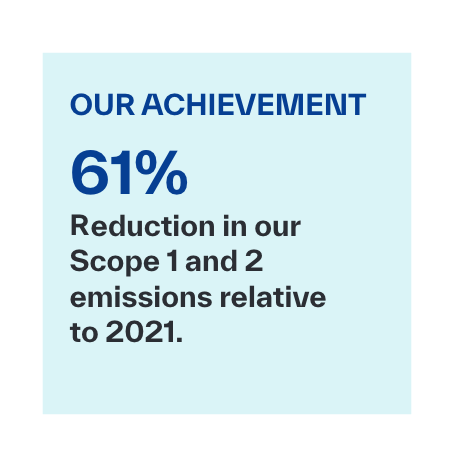
Arxada's operational team is responsible for delivering our strategy. As of 2024, we have already met our 2030 commitment, achieving a 61% reduction in our Scope 1 and 2 emissions relative to 2021. To meet net zero by 2050, we will be working to reduce our emissions in line with our approved SBTi targets.
In February 2025, Arxada was awarded the Silver EcoVadis Medal, based on our 2024 actions and performance, scoring in the top 9% of companies rated on the platform. In addition, it retained its designation as a Carbon Management Leader, defined by EcoVadis as a company with a strong GHG management system and best-in-class decarbonization commitments, actions and reporting capabilities.
Our scope 1 and 2 emissions
Arxada’s 2024 GHG inventory includes Scope 1 emissions from its manufacturing processes and facilities and Scope 2 emissions from purchased electricity and steam.
We seek opportunities for decarbonization across our facilities globally. One major project was the installation of a catalytic converter in 2021 in Visp, our largest production site. This installation led to significant reductions in nitrous oxide (N20), which represents a significant portion of our 2021 baseline Scope 1 emissions. To date, the converter has enabled us to reduce our N20 emissions from Visp by more than 500,000 tons of C02e per year, achieving a reduction of over 70% in our global Scope 1 emissions compared to 2021. The catalytic converter was a key driver in our ability to meet our Scope 1 and 2 target set in 2022, which in turn allowed us to achieve a 61% reduction of our global Scope 1 and 2 emissions from our 2021 baseline. However, this achievement does not deter us from seeking to improve the efficiency of our operations and finding opportunities to further reduce our footprint, to achieve our net zero commitment.
Another priority is reducing our Scope 2 emissions from purchased steam and electricity used to run our daily operations. We continue to explore ways to increase our use of renewable energy and other low-carbon energy sources. We are also working to identify equipment replacements that are more energy efficient. The case study below highlights another project in Visp, the installation of a vapor compressor that allowed us to significantly reduce our steam consumption in one of our processes.
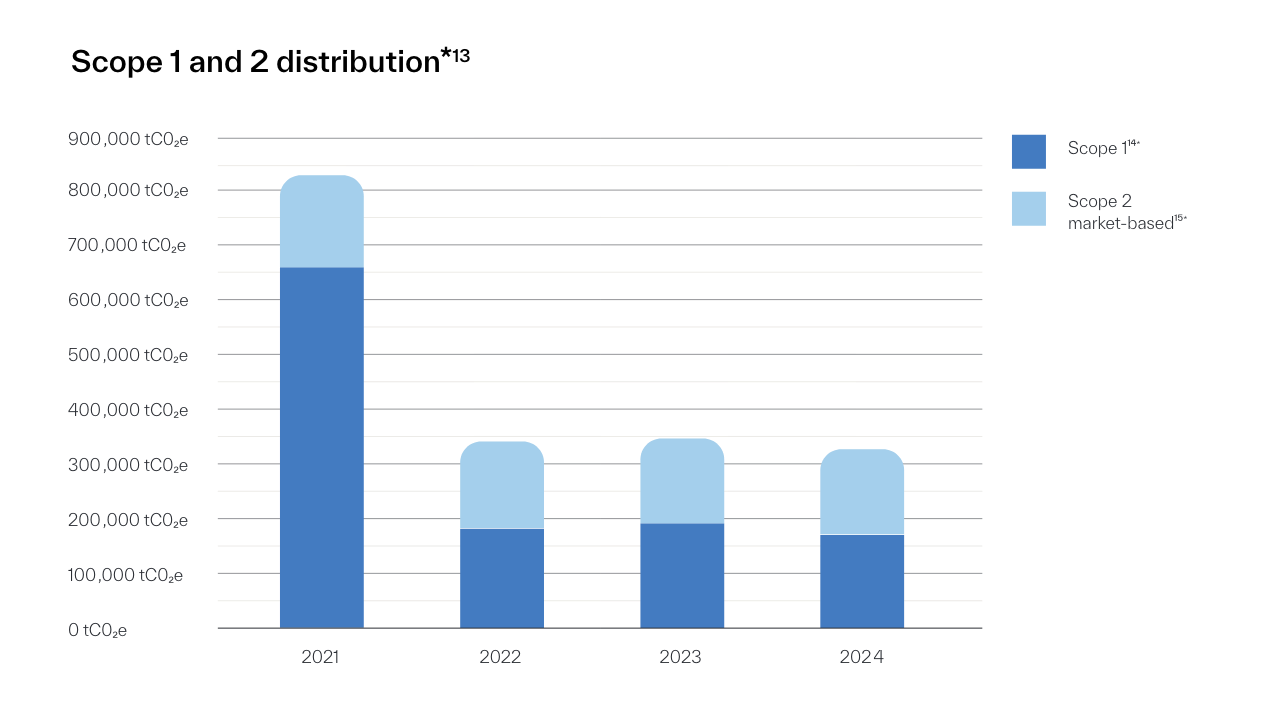
Our scope 3 emissions
In 2024, our Scope 3 emissions accounted for approximately 90% of our total GHG inventory. This notable shift in our emissions profile is due to two key factors. First, we successfully enhanced our Scope 3 inventory by incorporating additional relevant downstream Scope 3 categories. This improvement marks a significant milestone in our commitment to comprehensive and accurate emissions tracking, showcasing our dedication to environmental responsibility and transparency.
Second, as described in the “Our Scope 1 and 2 emissions” section above, we achieved a substantial reduction in our Scope 1 emissions compared to 2021, thanks to the installation of a catalytic converter in Visp. This advancement underscores our proactive approach to mitigating direct emissions and reflects our ongoing efforts to implement innovative solutions for a sustainable future.
Following the validation of our SBTi targets in 2023, we successfully set a Scope 3 emission reduction target. We commit to reducing absolute Scope 3 GHG emissions by 28% by 2030 relative to 2021. To support this, we are identifying raw materials with the most significant impact on our GHG intensity and seeking opportunities to reduce our consumption of these materials. We are also exploring the feasibility of recovering, recycling and reusing raw materials.
Along with the efforts to reduce our raw material consumption, we are working to further reduce our Scope 3 footprint by advancing responsible sourcing and waste management efforts throughout our value chain. We plan to engage strategically with our suppliers and customers to drive our Scope 3 targets. Please see our Responsible Sourcing section for more details on how we evaluate our suppliers.
Arxada's Visp site, our largest production facility, operates on a highly efficient "Verbund" principle that integrates material and energy flows with multiple recycling processes. Our team is investigating the potential for using biofuels from renewable feedstocks to feed the acetylene generation unit on site.
These innovations will further enable Visp to produce low-carbon, cost-competitive, chemical products and advance our Net Zero by 2050 commitment while better supporting our customers’ sustainability efforts.
| 2021 | 2022 (restated)¹⁷ | 2023 (restated)¹⁷ | 2024 | |
|---|---|---|---|---|
| Original Scope 3 inventory | 1,725,106 tCO₂e | 2,262,657 tCO₂e | 1,915,755 tCO₂e | 1,461,848 tCO₂e |
| Improved Scope 3 inventory including additional downstream emissions | 3,486,958 tCO₂e | 3,121,962 tCO₂e | 3,064,578 tCO₂e |
Air pollutants
In addition to GHG-related gases, we regularly monitor our emissions to air for concentrations of sulfur oxides (SOx), nitrogen oxides (NOx) and volatile organic compounds (VOCs) to mitigate emissions of dust and particulate matter.
We monitor these air pollutants in accordance with the timelines and procedures established by the relevant regulatory authorities. We employ various technologies, like filters and capture systems, to minimize emissions into the atmosphere. In 2024, no violations of air emission regulations were recorded at our production plants.
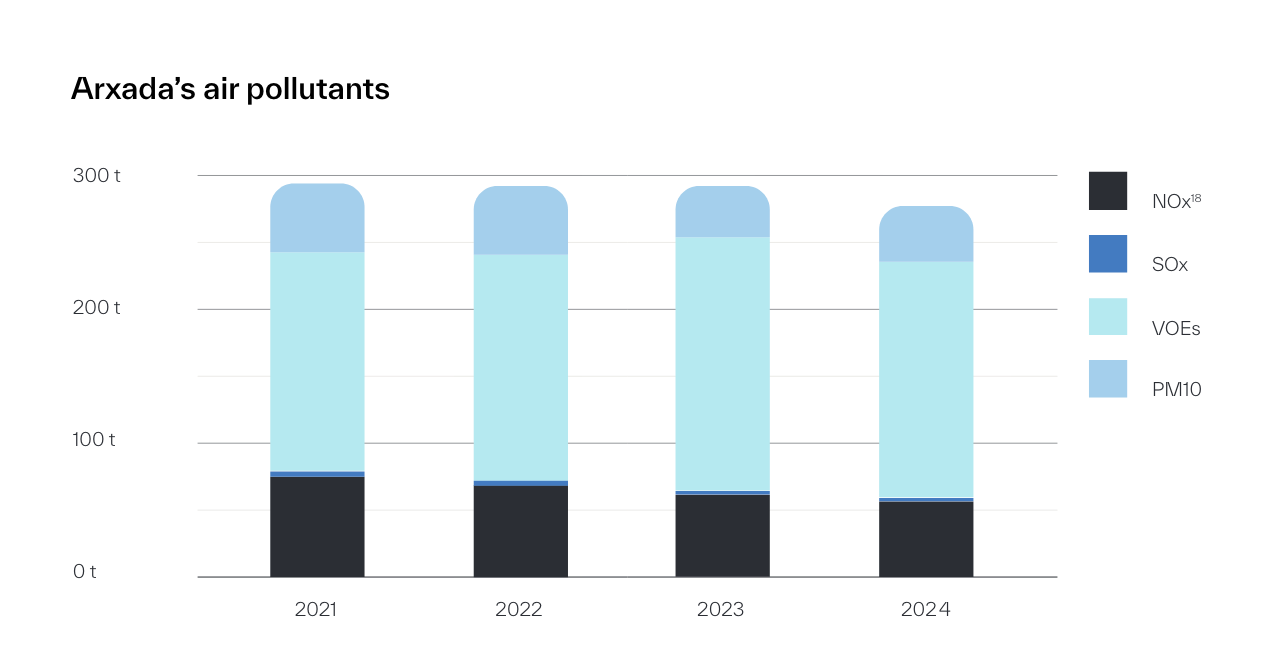
Looking forward to 2025
The validation of our emission reduction targets by the Science Based Targets initiative in 2023 advanced our ambitions to scale emissions reduction initiatives and identify additional opportunities to decrease our footprint. In 2025, we aim to establish the foundation of an integrated management system over all our sites, to increase the overall efficiency of our operations and expand the use of renewable energy to minimize environmental impact. We will seek ways to electrify processes currently dependent on natural gas. Our focus will be on finding the most impactful opportunities and working diligently toward achieving our goals.
[11]Based on our 2021 baseline.
[12] Our definition of net zero is aligned to the SBTi definition: Reducing Scope 1, 2 and 3 emissions to zero or to a residual level that is consistent with reaching net-zero emissions at the global or sector level in eligible 1.5°C-aligned pathways and neutralizing any residual emissions at the net-zero target year and any GHG emissions released into the atmosphere thereafter.
[13] The scope of our Scope 1 and 2 data, includes all manufacturing sites with FTE >10 (note, Auckland New Zealand and Trentham Australia manufacturing sites are included even though they have less than 10 FTEs) and Pilot Manufacturing sites with FTE >45. Emissions from offices are not included, as these are not material to Arxada’s overall emissions.
[14] Our Scope 1 emissions include the direct emissions to air from our operations, including CO2, N2O, CH4, from fuels (e.g., LPG and Fuel Oil). Arxada does not have emissions from PCF, HFCs or SF6.
[15] Our Scope 2 emissions are composed of purchased electricity and steam. For European locations, instead of the applicable residual mix factors, location-based IEA factors have been used.
[16] Our Scope 3 data includes Arxada (legacy LSI), Troy and Enviro Tech. The Scope 3 emissions calculations exclude the following categories: Upstream leased assets (Cat. 8), Processing of sold products (Cat. 10), Use of sold products (Cat. 11) , End-of-life treatments of sold products (Cat. 12), Downstream leased assets (Cat.13), Franchises (Cat.14), Investments (Cat.15). As an improvement of our Scope 3 approach, our 2022 and 2023 data also include Processing of sold products (Cat.10) and End-of-life treatments of sold products (Cat. 12). For our Waste generated in operations (Cat. 5) data, the footnote 11 scope limitations apply.
[17] The 2022 and 2023 Scope 3 values have been restated to account for missed data from Troy and Enviro Tech. These restated values supersede those published in our 2023 Sustainability Report. We acknowledge that additional methodological improvements were made for the 2024 calculation. We aim to publish a full recalculation for years 2021-2023 using our improved methodology in our 2025 Sustainability Report.
[18] NOx emissions do not include N₂O, which is included in our Scope 1.
* Metrics have been assured by ERM CVS. For more information, please see the “External Assurance Statement” which details the scope, activities and conclusion of their engagement.


